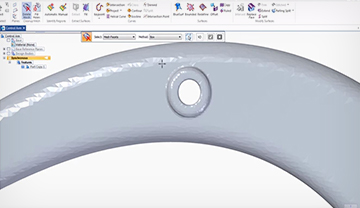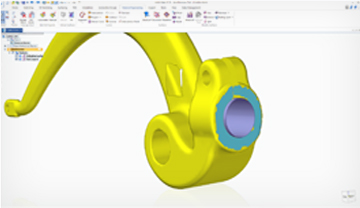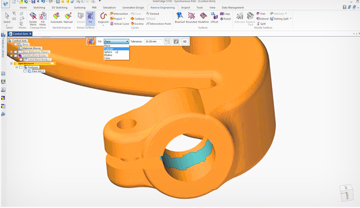Reverse Engineering: from 3D Scanning to CAD
Reverse Engineering: from 3D Scanning to CAD
Reverse Engineering: from 3D Scanning to CAD
In conjunction with powerful 3D design tools, Solid Edge delivers smart functionality to work with mesh, or triangle-based data. Bodies can be imported from other systems, digitally scanned or products of a generative design analysis. All of these come in as a mesh of triangles (or facets) and in many cases require further design modification.
Expand your 3D design capabilities beyond the norm
Solid Edge provides intuitive mesh cleanup tools to remove any errors that may have resulted from the import process, allowing designers to obtain a workable set of triangles. With a sound mesh, regions can be identified and created. Those regions can be further extracted as surfaces and edited using traditional surface modeling tools.

Create workable meshes
Imported mesh bodies don’t always meet your needs, so Solid Edge delivers tools to remove specific facets or mesh regions, fill holes and smooth the mesh. These mesh cleanup operations help designers to prepare faceted bodies for downstream modeling and/or manufacturing.

Model preparation made easy
Finding logical facet shapes is paramount to preparing the geometry for analytical surface operations, and the Identify Regions tools permit logical grouping of triangles that can be used in the creation of faces.

Intuitive surface creation
The true power of reverse engineering is realized when you can create native surfaces on top of imported data. Solid Edge delivers commands to not only extract faces from identified regions of the mesh, but also to fit analytical faces on top of a region.
